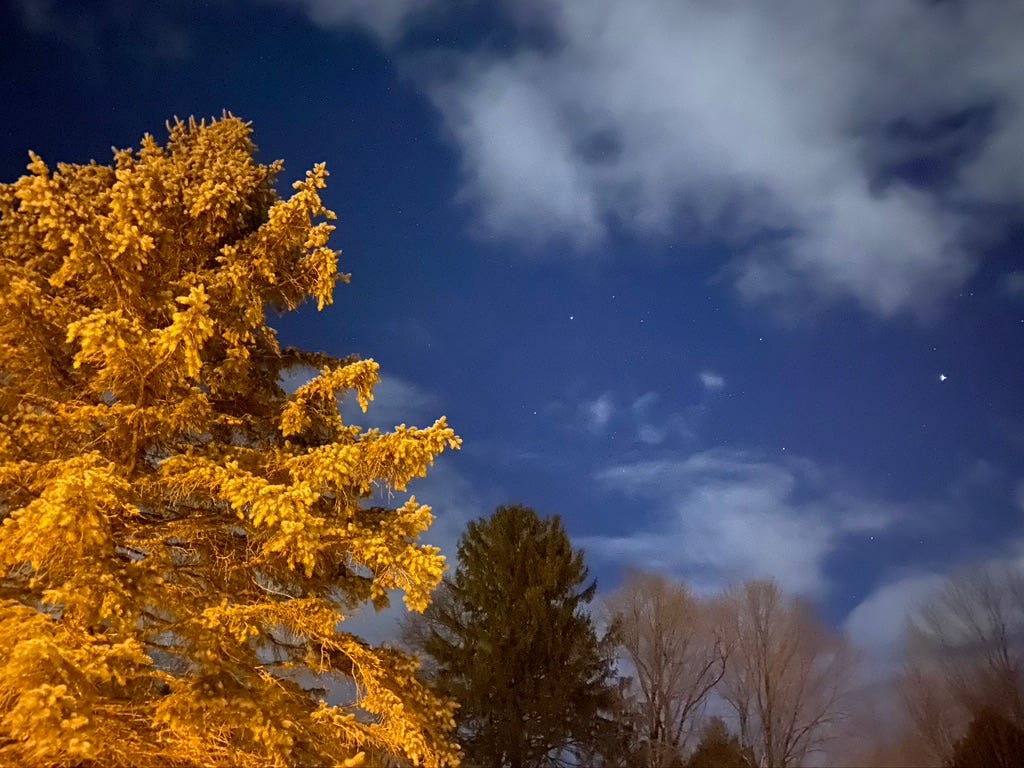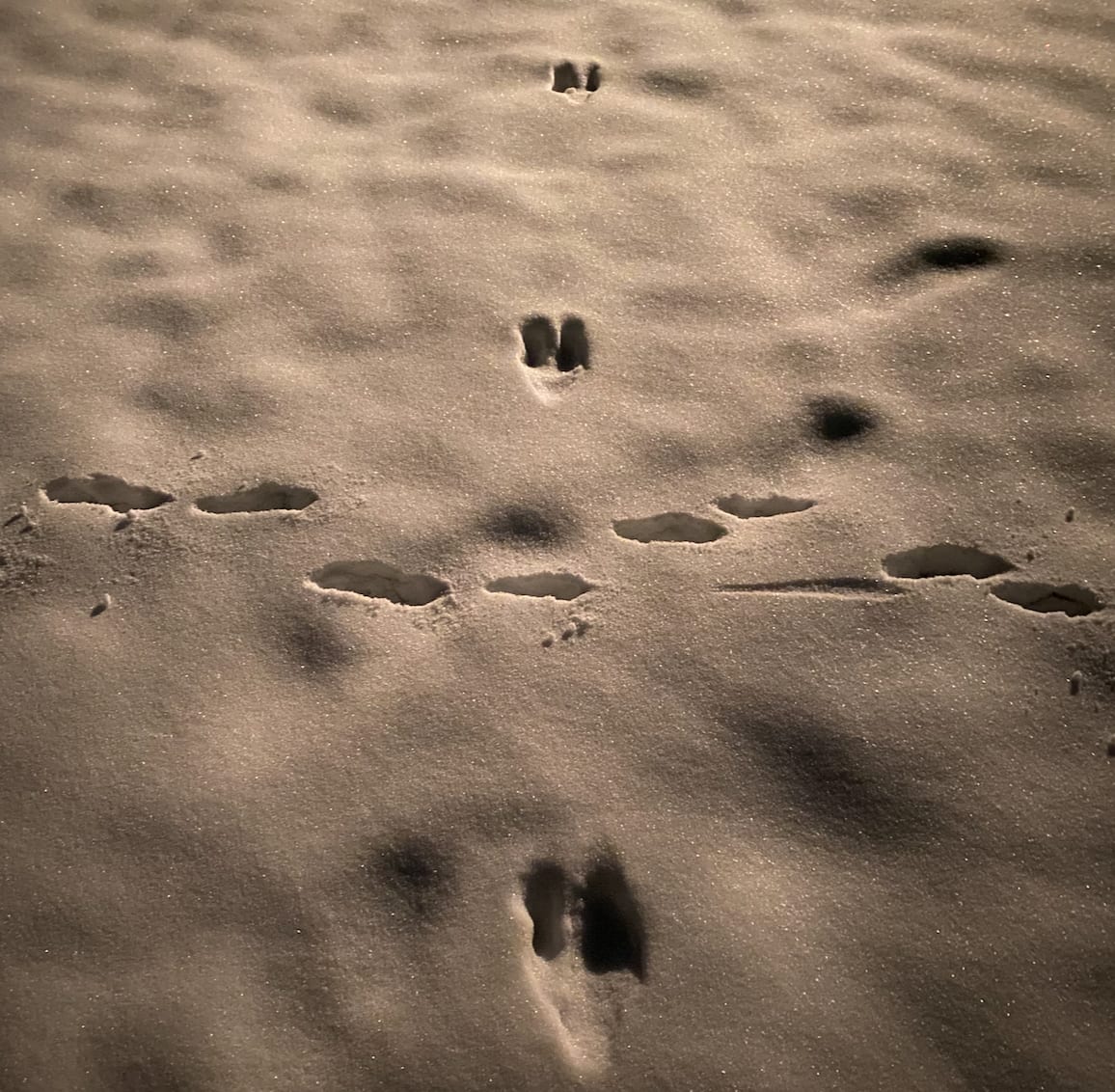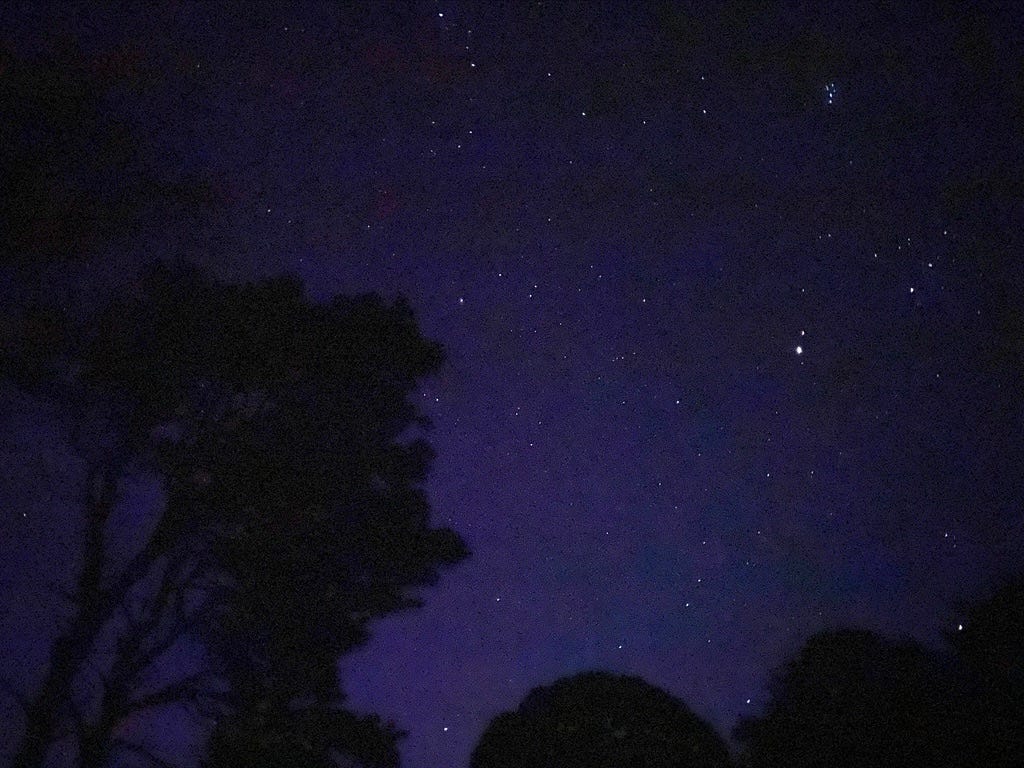More Darkness
For the wind itself is full of starlight.
Whenever I start to see a theme repeating in the things I’m reading, I try to make note of it. A sign, maybe, that I need to do something with whatever idea keeps finding me. Lately the one I keep running into is that we have been robbed of something fundamentally important by the light pollution in the night sky.
Fitting, I think, to dwell on that idea this week. We are past the solstice and so now is the time of sun return, a lengthening of days. Our attention to the sky is rarely keener than at this time of year. Letting my dog out at night, the stars, when I can see them, seem sharper and clearer in the winter cold, and have a glittering coldness to themselves that is attenuated—maybe just in my imagination—in the warmer months.
It’s inarguable that those stars are getting harder and harder to come by. What was simply a fact of life for almost all of human history is a rarity now, and one bizarrely unremarked-upon. Living in a city, as I do, means you’re lucky to get even a smattering of them every few nights, and only those which are brightest. I find that profoundly depressing—not just for romantic or aesthetic reasons, although those certainly contribute. Robert Macfarlane, in The Wild Places, writes (emphasis mine):
Our disenchantment of the night through artificial lighting may appear, if it is noticed at all, as a regrettable but eventually trivial side-effect of contemporary life. That winter hour, though, up on the summit ridge with the stars falling plainly far above, it seemed to me that our estrangement from the dark was a great and serious loss. We are, as a species, finding it increasingly hard to imagine that we are part of something which is larger than our own capacity. We have come to accept a heresy of aloofness, a humanist belief in human difference, and we suppress wherever possible the checks and balances on us—the reminders that the world is greater than us or that we are contained with in it.
It is profoundly alienating to live a human life in which darkness has been banished and replaced with a perpetual half-glow, one that permits no end to the opportunities to produce and consume. Darkness, punctuated only by the moon and the stars, was always a fundamental check and balance on our activities, a baked-in period of rest, stillness, quietude, attention. It came each night without fail. And in removing that darkness and all its attendant demands to slow down, we have made ourselves more than a little insane. Macfarlane continues:
We have in many ways forgotten what the world feels like. And so new maladies of the soul have emerged, unhappinesses which are complicated products of the distance we have set between ourselves and the world. We have come increasingly to forget that our minds are shaped by the bodily experience of being in the world—its spaces, textures, sounds, smells, and habits—as well as by genetic traits we inherit and ideologies we absorb.
This was driven home to me—this forgetting what the world feels like—this past summer on a trip to Cape Cod with my wife’s family. Our vacation coincided with the peak of the Perseid meteor shower. We rallied the group to grab some lawn chairs and sit out for it; that close to the ocean, the sky was dark enough to really see the display, and we were rewarded accordingly. And in the midst of all the gasping and pointing, I heard my sister-in-law’s boyfriend say “I don’t think I’ve ever seen a shooting star before.”
That shocked me, though it probably shouldn’t have: according to Dark Sky International, 80% of the world’s population and 99% of Americans live under a substantial enough “skyglow” that they can’t experience a natural night. The vast majority of children born worldwide since 1988 will go their whole lives without seeing the Milky Way. Never having seen a shooting star before is not a personal failure of attention but a massive structural problem several centuries in the making. What a profound loss—that the only truly bright celestial objects most people will ever see at night are manmade planes and satellites. As L.M. Sacasas writes in one of his best issues of The Convivial Society:
Perhaps this is a bit too dramatic a metaphor, but if we think that the loss of the star-filled night sky is a real and serious loss with significant if also difficult to quantify human consequences, then the final imposition of an artificial network of satellites where before the old celestial inheritance had been seems rather like being tossed cheap trinkets to compensate for the theft some precious treasure.
Yes, we have been robbed of something here. And the compounding tragedy is that with each passing year, fewer and fewer people will even know that it was ever otherwise, that the sky was ever so dark as to force us—to permit us—to live in a more restful, attentive way. Sacasas continues:
We are doomed, it seems, to abide the loss of all that we cannot quantify. Absent shared ethical frameworks or normative accounts of human flourishing, modern societies tend to resort to quantification as an ostensibly neutral and value free lingua franca suitable for the public sphere. Meanwhile, it becomes increasingly difficult to recognize and defend human goods that cannot be objectively measured. And should some effort be made to quantify them, they are likely to be reduced, impoverished, and exploited.
Still, despite our societal commitment to the perpetual glow, there are places one can go to regain a sense of what’s really above us in the night. Hal Borland, a naturalist and country-life correspondent for The New York Times, found plenty of stars overhead in the Connecticut hills of the 1970s, and within them a sort of aesthetic warmth, even in the wintertime. In the December 26 entry to his Book of Days, Borland writes:
…though I admire the mathematics, I almost resent being told that some of those stars I am seeing have been dead and without a glimmer of luminescence for a thousand or two thousand years. The light I see, I am told, and no doubt with ample reason, is simply light that was cast this way by those stars before they died.
Even so, to walk abroad now is to walk in the midst of infinity. There are no limits to either time or distance, except as man himself may make them. I have only to touch the wind to know these things, for the wind itself is full of starlight, even as the frozen earth underfoot, starlight and endless time and exalted wonder.
There is wonder up there, even if we have veiled it, or had it veiled for us. And even still the winter wind is full of starlight—I think I can feel it when I step outside at night, here at the close of December.
One year ago today, I wrote a missive that I titled “More Light.”
I stand by it. But I can’t help but think that an equally important mantra for this year, and all that will follow it, is its inverse: More Darkness. By this I do not mean the abandonment of light, but simply the acceptance of our own place within the world and its encompassing universe, an acceptance that can only fully occur through a striving toward attention in the quiet darkness.
Thanks, as always, for reading. I’ll talk to you next year.
-Chuck
PS - If you liked what you read here, why not subscribe and get this newsletter delivered to your inbox each week? It’s free and always will be, although there is a voluntary paid subscription option if you’d like to support Tabs Open that way.






A forever memory I have is of one night at the beach house, ‘94 or ‘95, all of us out on the deck watching the Perseid shower. One by one, you guys fell asleep and I took each of you inside to go to sleep. The active night sky and the sound of the waves reaching the shore (in darkness, heard but not seen) were a powerful combination.
I love this. Thank you for honoring the dark/night. It resonates deeply with me; in fact I just published a piece yesterday on Making Friends with the Dark!